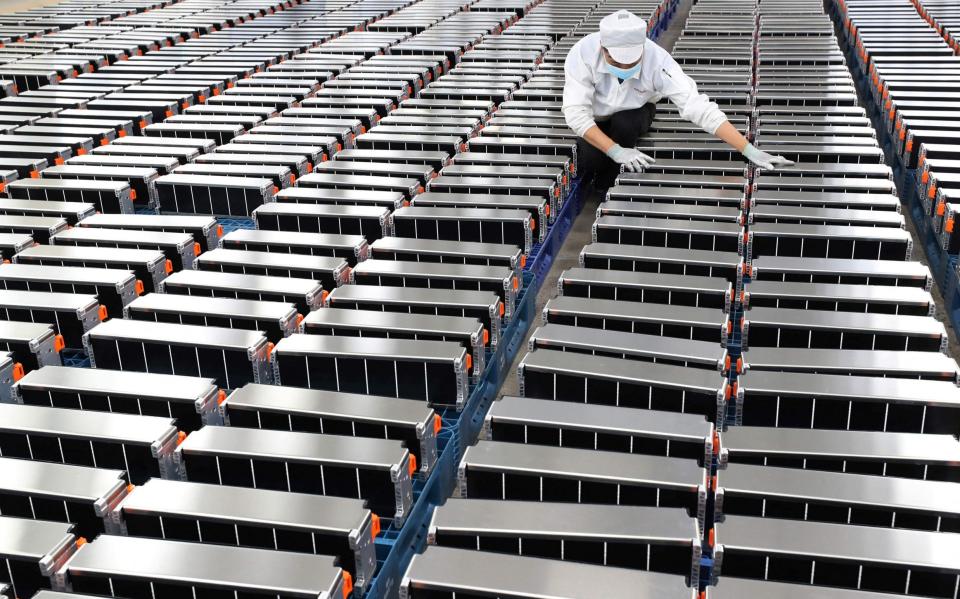Why a Welsh car battery company is causing an international stir

Electric car buying may be slowing in Britain but a group of former Tesla executives recently agreed to take over a loss-making Welsh battery developer with a twist.
Unlike rival manufacturers, which develop batteries using lithium, DG Innovate is looking to usher in an era of cheap electric cars by powering them with sodium.
Spearheading the company’s push will be Peter Bardenfleth-Hansen, who once launched Tesla’s operations in Scandinavia but has now turned his attention to DG Innovate.
He will be joined on the board by Jochen Rudat, an ex-director of Tesla Europe, and Christian Eidem – formerly an adviser to Elon Musk and who was also an early investor in the billionaire’s electric car company.
However, Eidem has now turned his attention away from Tesla’s base in Texas and instead bought a 29pc stake in DG Innovate.
Already, the trio are pursuing plans to build a factory to build sodium battery cells, says Bardenfleth-Hansen, although this may take some time.
Unlike lithium, which is plentiful but requires mines to retrieve it, sodium is easily accessible from sea salt.
It is this ease of availability that prompted DG Innovate’s push into sodium electric car batteries, as investors look to meet demand amid a global switch away from petrol and diesel vehicles.
Bardenfleth-Hansen also highlights the importance of reducing Europe’s reliance on lithium mines in China: “The necessity to move away from China, or basically anything that’s controlled outside of Europe, has obviously become very clear over the past couple of years.”
The batteries that dominate today’s mobile phones and cars use lithium, nickel, manganese and cobalt (NMC).
However, developers have reduced reliance on cobalt because it is expensive and mined in the Democratic Republic of Congo, where practices have been criticised for alleged use of child labour.
Greater scrutiny has also been placed on the use of nickel because of sharp price rises in recent years.
A cheaper alternative to also emerge for car batteries of late has been lithium iron phosphate (LFP), which makes use of iron and phosphates. Its popularity has soared after Mr Musk said he would launch new Tesla models using LFP.
Understanding the difference in their capabilities is key. For example, NMC batteries offer about 250 watt-hours per kilogram, while LFP provides a rate of 200. By contrast, sodium cells provide up to 160.
These variations in power are reflected in the cost, as NMC batteries are valued at around $120 (£95) to $170 per kilowatt hour, while LFP costs up to $110.
Once sodium battery technology matures, it is expected to cost around the same as the latter – but perhaps even cheaper, says Dr Chris Jones, strategic trends manager at the UK’s advanced propulsion centre, which distributes government funding.
That is despite warnings that other costs linked to its manufacturing could mean only $10-20 is ultimately shaved off its price per kilowatt-hour.
Fortunately, inroads are being made into these other costs, says Dr Jones, which could reduce how much power is needed to make them.
He says that using infrared technology or removing solvents from sodium battery manufacturing could slash energy usage, which in turn will bring down costs.
Innovation that potentially reduces the cost of electric car batteries will prove crucial as the rate of sales slows in Britain and Europe.
Last month, car purchases fell by 6pc, triggered by a slump in sales of battery-powered vehicles, according to figures from the Society of Motor Manufacturers and Traders.
The lobby group found that the percentage of electric cars sold has fallen compared to the rest of the year, with EVs accounting for 15.6pc of car sales in November, compared to 16.3pc in the first 10 months of the year.
Forecasts for electric car take-up were also slashed by almost half last month by the government’s financial watchdog, the Office for Budget Responsibility.
The OBR previously indicated that sales of new battery-powered cars were expected to grow steadily until accounting for 67pc of the market by 2027, under a prediction issued in March.
However, that figure has now been revised down to just 38pc by the OBR, which said that the take-up of EVs has been slowing.
Getting the price of electric cars down to that of petrol equivalents has been seen as a way to boost sales, particularly as the cost of running the vehicle remains cheaper thanks to low-cost home charging.
Dr Jones says there are two big trends to keep an eye on in the industry’s quest for cheaper and more efficient batteries.
One is alternative chemistries like sodium and LFP, and the other is so-called solid-state technology.
Battery cells have an anode and cathode, plus an electrolyte which transfers charge-carrying particles between the two. Currently, electrolytes in lithium batteries are liquid. However, a solid electrolyte is potentially lighter, safer and accommodates faster charging.
Car manufacturers such as Nissan and Toyota are predicting that a solid-state model will be ready by 2028, although Mauro Pasta, professor of applied electrochemistry at the University of Oxford, warns that mass manufacturing at a reasonable cost is still a long way off.
He also warns of the pitfalls underlying sodium technology, although he adds it could ultimately serve as a useful alternative to lithium.
“You want to have that chemistry in your pocket, just in case the price of lithium will go up again,” he says. “Then you have an alternative that is inexpensive.”
Crucially, the availability of sodium for other battery technologies could also reduce overall competition for lithium, potentially bringing down costs.
Yet, regardless of which substance is used, both Dr Jones and Mauro Pasta agree that new technologies will be needed to power the electric car revolution.
“We’re not going be able to deliver that with the infrastructure that we have right now,” says Pasta.

 Yahoo Finance
Yahoo Finance 